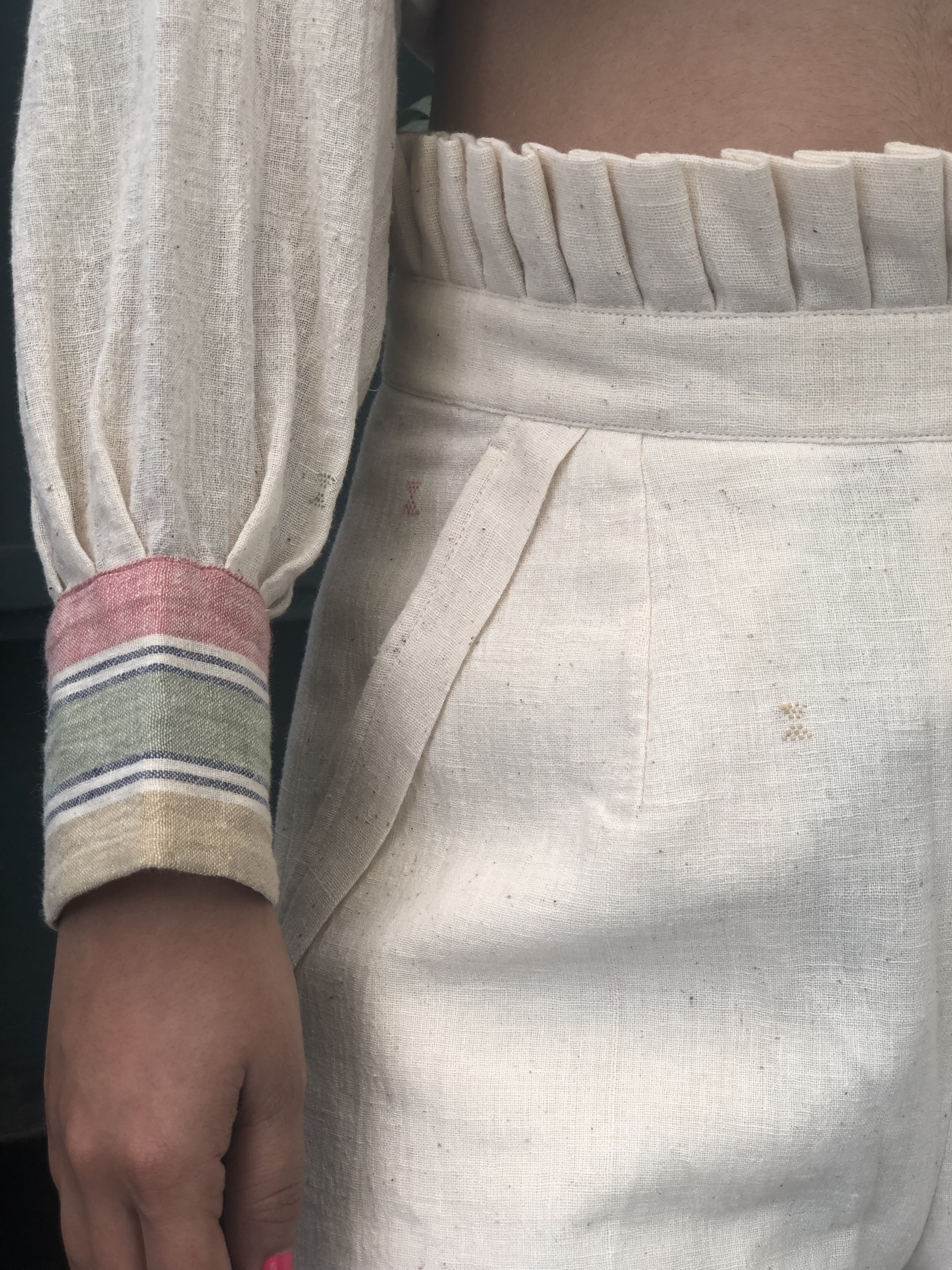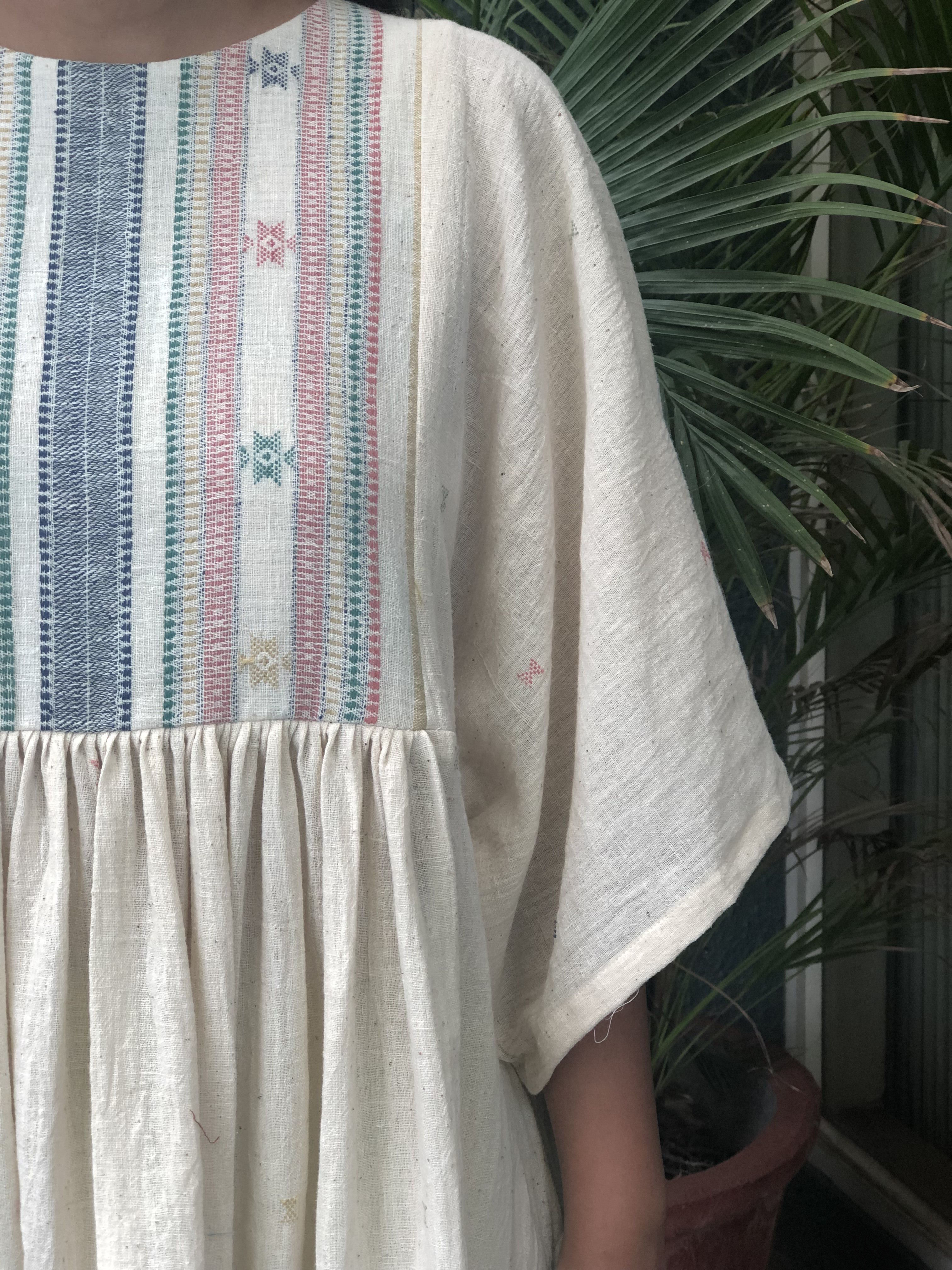Interview with Purvi Doshi
Designers
AN INDIAN SUCCESS STORY
AN INDIAN SUCCESS STORY
We met self-educated Indian designer Purvi Doshi during Impact. Her collections - for men and women - are a mix of traditional Indian attire and contemporary pieces with amazing finishes such as handcrafted embroidery. She is always searching for new ways to manufacture and dye naturally. Her mission is to create ecologically sustainable high fashion. Discover her story :
Can you please introduce yourself and your brand?
My name is Purvi Doshi, I was born in India and I am a self-taught designer. I started working when I was in my second year of college, I never knew that I would become a designer, but I learnt how to sew all by myself. I created beautiful clothes first for myself and then for my friends, but I was not very good at tailoring. So, I seeked help from tailors in my city and one of them made me a wonderful offer : to work for him as a Designer. I started to draw things I used to love. This small business made me some pocket money and so I could start studying and working for big companies, but I realised what I really loved doing was my “hobby”. So, I left my other jobs and started designing. I had never studied fashion but I had big ambitions; aiming high really helped me. I took part in Fashion Week in India, and from then on I haven’t looked back, continuing to design my collections. For 8-9 seasons, I took part in New York fashion week and started to work with natural colours and dyes, and handcrafted embroideries. The turning-point was 6 years ago, when I realised how cruel silk production really was: worms are boiled alive. So, I announced to my studio that we would no longer be working with silk. We have so many craftsmen in India and we should preserve them, one garment should employ 3-4 people and this is what I try to do.
So how are you getting on now?
From a brand that I founded in 2011, with no fashion background and no money, we have just opened a second shop in my city, so we are very happy!
How did you get involved in sustainable fashion?
Silk production was the turning point, and then I started to read about fashion and its impact on the world. We have killed so many species in the name of fashion, and polluted so much water! Even if you are not using silk, fur, or leather you are producing chemicals which are transmitted into water supplies and kill ecosystems… In fact, I was getting tired of my job, so this gave me a new passion, working with this new set of ethics and now I’m enjoying it everyday! I work with almost 300 craftsmen in India and I’m in direct contact with most of them.


Describe your brand in 3 words
Kind
Clean
Happy
Can business truly be ethical?
It has to be! Everything should be ethical!
What are your inspirations?
Nature. Most of my embroideries are birds, animals, or plants. But I’m also inspired by people around me, in the streets, with the many different shapes and clothing.
Why IMPACT?
They chose us, and thank you, because I belong to this philosophy. “Impact zones” should exist everywhere !
On the consumer side of things, what noteworthy changes have you noticed?
I can see that my customers are very happy when they hear the story behind the clothes and they come to understand what sustainability is. But sustainability is not cheap! I am yet to see that change in them, to consciously stop buying tonnes of new clothes, they have to choose 1 or 2 ethically produced things...This is compulsory!
What challenges do you face daily?
My cost is very high now because I pay my craftsmen fair wages as I get beautiful embroideries that are part of the real craft of my country and so, my production cycle has skyrocketed. One garment could take from 1 to 3 months to create. But there are brands producing thousands of pieces everyday, so in that sense my production is low, and people want cheaper stuff so it’s a challenge. I don’t know if people are ready to pay the price of high-quality clothing. Also, there are some imperfections due to human-error as we make our clothes by hand, and we have the same problem with the natural dyes. It’s not perfect, it bleeds, it fades, even if it’s good for the environment and our bodies. So yes, it’s a challenge to make sales and convince clients to take care of clothes, every step is a gamble, but it’s fascinating!
What do you see for the future of fashion?
Clothing will be more comfortable, and people will prefer long lasting and sustainable pieces. But be careful, not every sustainable garment will be long lasting, even though garments are made by machines. Consumers will be assured that their clothing was not created using child labour nor hazardous or cancerogenic dyes. And we - ethical designers - will have to find technological solutions. It takes time, and we can’t say for sure what the future will hold.
Describe IMPACT in 3 words.
Ethical
Sustainable
Positive
What projects are you working on ? What do you have planned for the future of your brand?
India is a labour surplus country, with many crafts as well. Right now, I’m working with more than 300 artisans and my plan is work with even more. But if this cannot be achieved, I want to at least give them regular work, all year long. My aim is to work on different silhouettes and new ways to use embroidery.